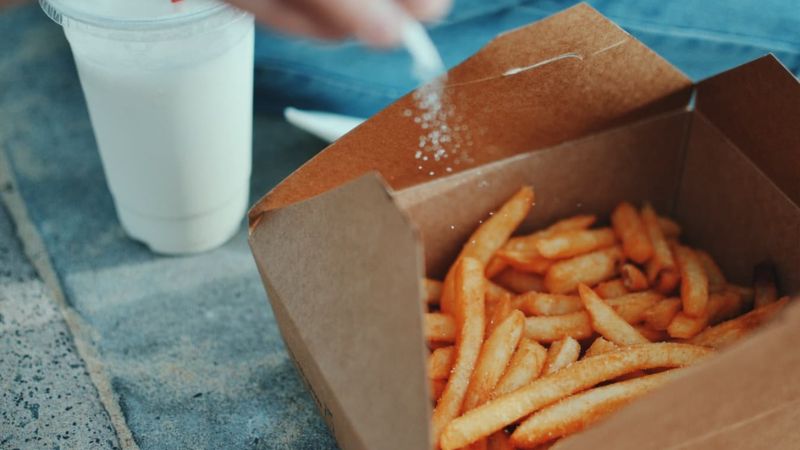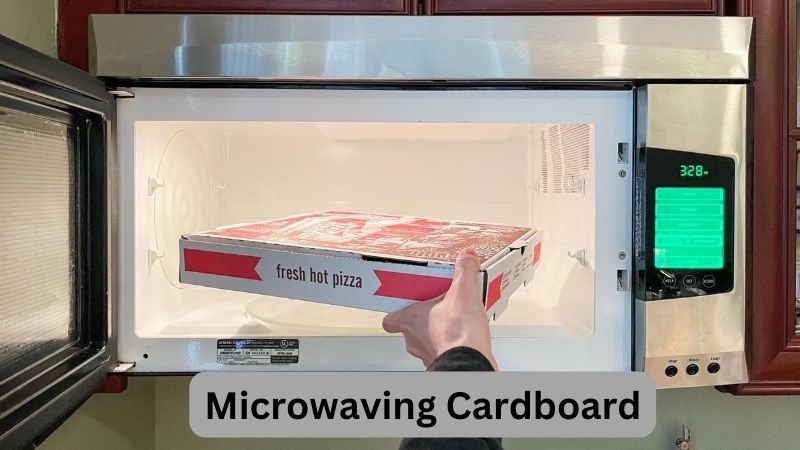Microwaves have become a staple appliance in most households, offering convenience and ease of use in the kitchen. From warming up leftovers to popping popcorn and quickly heating foods without the need for stovetop or oven cooking, microwaves have revolutionized meal preparation. However, amidst the widespread use of microwaves, many users have questions about what is safe to microwave. One common query revolves around whether it is safe to microwave cardboard. In this comprehensive article, we will delve into the safety concerns and considerations associated with microwaving cardboard.
Table of Contents
Understanding Cardboard Composition
To understand the safety implications of microwaving cardboard, it’s important to first grasp its composition. Cardboard is a broad term that refers to any stiff paper-based material used in packaging or construction applications. It is primarily composed of paper fibers, which provide its main structure and rigidity. Additionally, cardboard may contain adhesives, coatings, or dyes to enhance its strength and durability. These additional components can vary depending on the specific use of the cardboard. For example, food packaging cardboard might have a coating to prevent moisture absorption or printing ink for branding purposes.
When exposed to heat and moisture, cardboard undergoes changes that can compromise its integrity. The combination of heat and moisture weakens the paper fibers and can make the cardboard more susceptible to bending, warping, or even combusting. The risk of combustion arises from the combustible nature of paper fibers, which can ignite under high temperatures.
Safety Concerns with Microwaving Cardboard
When it comes to microwaving cardboard, there are two primary safety concerns: the risk of fire and the potential release of harmful chemicals.
Fire Risk:
The cardboard is flammable, and subjecting it to high temperatures in a microwave can lead to ignition. The heat generated by the microwave can heat the paper fibers to the point where they catch fire. This is especially true if the cardboard is in direct contact with the microwave’s heating elements or if it becomes too hot due to extended cooking times.
Release of Harmful Chemicals:
Certain paper-based products, including cardboard, may contain chemicals such as chlorine bleach or other additives used in the manufacturing process. When exposed to heat, these chemicals have the potential to vaporize and be released into the food or microwave environment. Ingesting food that has come into contact with these chemicals can have adverse effects on both the food’s quality and the consumer’s health.
It’s crucial to note that the safety concerns associated with microwaving cardboard are not limited to the cardboard itself. The risks can also extend to the food being heated or the overall safety of the microwave environment.
Factors to Consider
When deciding whether to microwave cardboard, several factors should be considered:
Microwave-Safe Labeling:
Many products, including cardboard-based food packaging, are designed with microwave safety in mind. These items are labeled as “microwave-safe” or carry specific instructions for microwave use. If the cardboard packaging bears such labeling, it indicates that the manufacturer has tested the product for safe microwave use and that it will not release harmful chemicals or pose a fire hazard. Always look for microwave-safe labeling before microwaving any cardboard-based item.
Safety Rating Uncertainty:
In situations where there is no microwave-safe label or uncertainty about the safety rating of the cardboard, it is best to err on the side of caution and avoid microwaving it. Without clear indications of microwave safety, there is an increased risk of fire or chemical release.
Cardboard Alternatives:
In some instances, it may be possible to use alternatives to traditional cardboard when microwaving. Oven-safe paper bags or ceramic dishes can be viable substitutes. However, it is important to ensure that these alternatives are specifically labeled as microwave-safe and have sufficient heat resistance and structural integrity to withstand the heating process without compromising safety.
Structural Integrity:
Regardless of the material being used, it is crucial to ensure that the packaging or container is structurally sound and does not become damaged during the heating process. Damaged or weakened containers can increase the risk of exposing the food to hazardous materials or causing a fire hazard.
Microwaving Cardboard: Best Practices
If you determine that the cardboard is microwave-safe or if you are using a suitable alternative, following these best practices can help minimize risks:
Microwave-Safe Label:
Ensure that the cardboard item or its packaging is clearly labeled as microwave-safe or approved for microwave use.
Avoid Moisture:
Keep the cardboard dry while microwaving. Moisture can weaken the paper fibers and increase the risk of ignition.
Moderate Heat:
Avoid subjecting the cardboard to excessive heat. Stick to recommended cooking times and temperatures specified on the product label.
Avoid Overheating:
Do not leave the microwave unattended while the cardboard is being heated. If you notice any signs of combustion, such as smoke or flames, immediately turn off the microwave and remove the item.
No Food Packaging Reuse:
It is advisable not to reuse food packaging that contains cardboard components. Besides the safety concerns associated with heating cardboard, reusing packaging can also lead to cross-contamination or compromise the integrity of the packaging.
Alternative Uses for Cardboard in the Microwave
While it is generally recommended to avoid microwaving cardboard, there are some alternative uses for cardboard in the microwave that can be done with caution:
- Steaming: Cardboard containers can be used for steaming certain foods in the microwave. However, it is essential to ensure that there is sufficient liquid present within the container to prevent the cardboard from reaching combustion temperatures.
- Baking or Reheating: When using cardboard for baking or reheating, it is advisable to cover it with a microwave-safe material such as foil or wax paper. This added layer helps reduce the risk of fire hazards.
Always exercise caution when using cardboard in alternative ways, and closely monitor the process to prevent any safety issues.
Exploring Microwave-Safe Cardboard
To ensure safety when shopping for microwave-safe cardboard materials, consider the following:
Look for Labels or Certifications:
Check for labels or certifications on the packaging that indicates the product has undergone testing and received approval for microwave use. These labels provide assurance that the cardboard has been deemed safe for heating in a microwave.
Alternative Materials:
Consider alternative materials that offer better heat resistance and structural integrity compared to standard paper-based cardboard containers. Options such as silicone or polypropylene containers are designed to withstand higher temperatures and are less likely to ignite or release harmful chemicals.
By exploring microwave-safe cardboard options and alternative materials, you can make more informed choices for safe microwave use.

Common Misconceptions
Several misconceptions surround the topic of microwaving cardboard. To clarify these misconceptions, let’s address a few common ones:
1. All Cardboard is Safe for Microwaving:
This is not true. While some cardboard products are designed for safe microwaving and carry appropriate labels, not all cardboard materials are suitable for microwave use. It is crucial to follow the specific instructions and safety guidelines provided by the manufacturer.
2. Any Packaging Material is Safe for the Microwave:
Packaging materials can vary widely in their composition and safety ratings. Even if a product is primarily made of cardboard, it may contain other components or coatings that make it unsuitable for microwave use. Always check for microwave-safe labeling or other indications of safety before using any packaging material in the microwave.
3. Microwaving Cardboard is Always Dangerous:
While there are risks associated with microwaving cardboard, these risks can be mitigated by using microwave-safe products and following recommended guidelines. By being aware of the potential hazards and taking necessary precautions, you can minimize the dangers and safely use cardboard in the microwave when appropriate.
Conclusion
In conclusion, microwaving cardboard can pose safety risks due to the potential for fire hazards and the release of harmful chemicals. It is crucial for consumers to exercise caution when using cardboard-based products in the microwave. Look for items labeled as microwave-safe or tested by accredited laboratories to ensure their safety. Additionally, consider alternatives to standard cardboard materials that offer better heat resistance and structural integrity.
By following these guidelines and considering the factors discussed, you can make informed decisions about whether to microwave cardboard. Remember, the answer is generally no, unless the item has been specifically designed and labeled as microwave-safe. Prioritizing safety is key when using the microwave, and understanding the risks associated with different materials is essential for a secure and enjoyable cooking experience.
